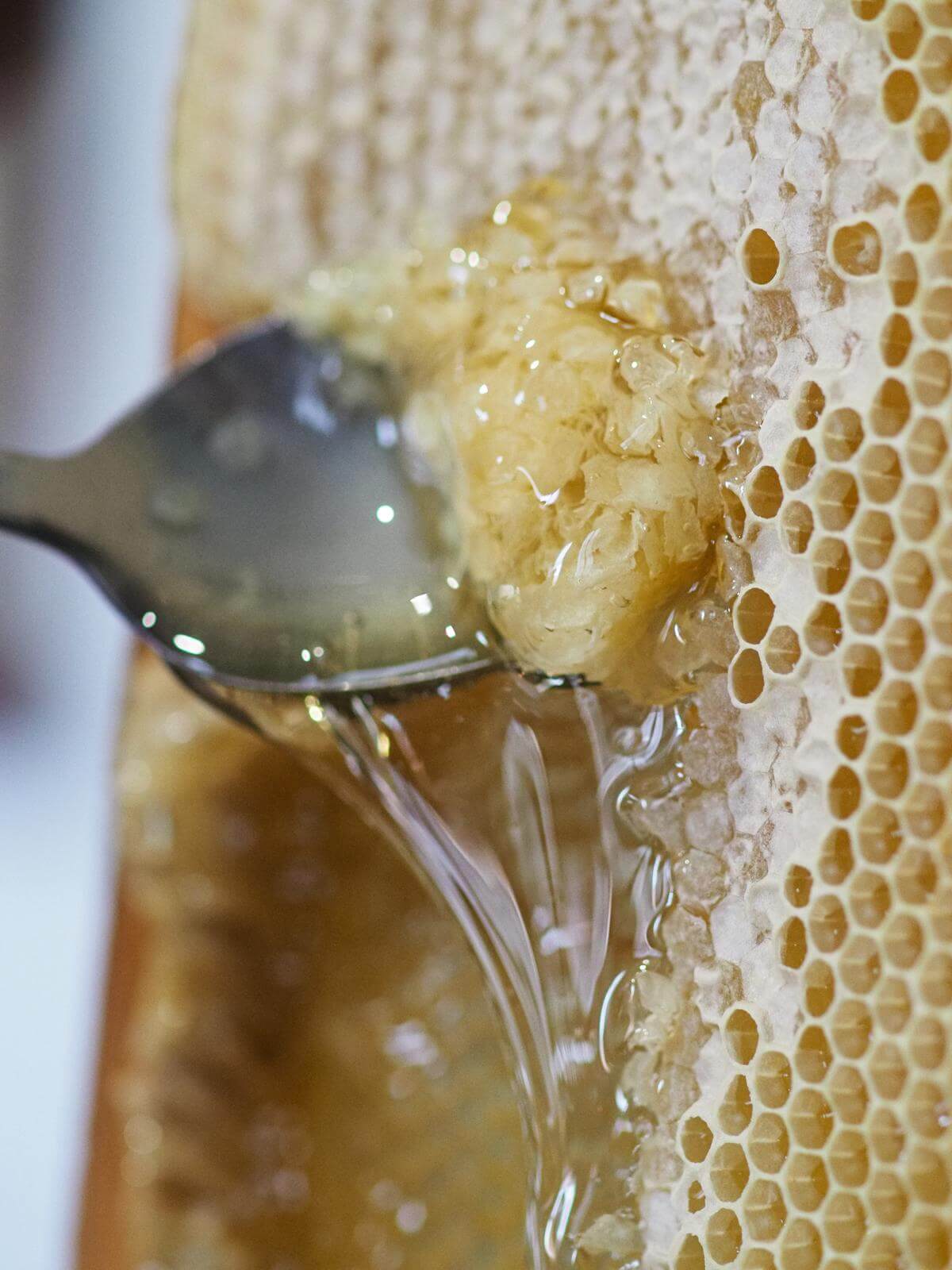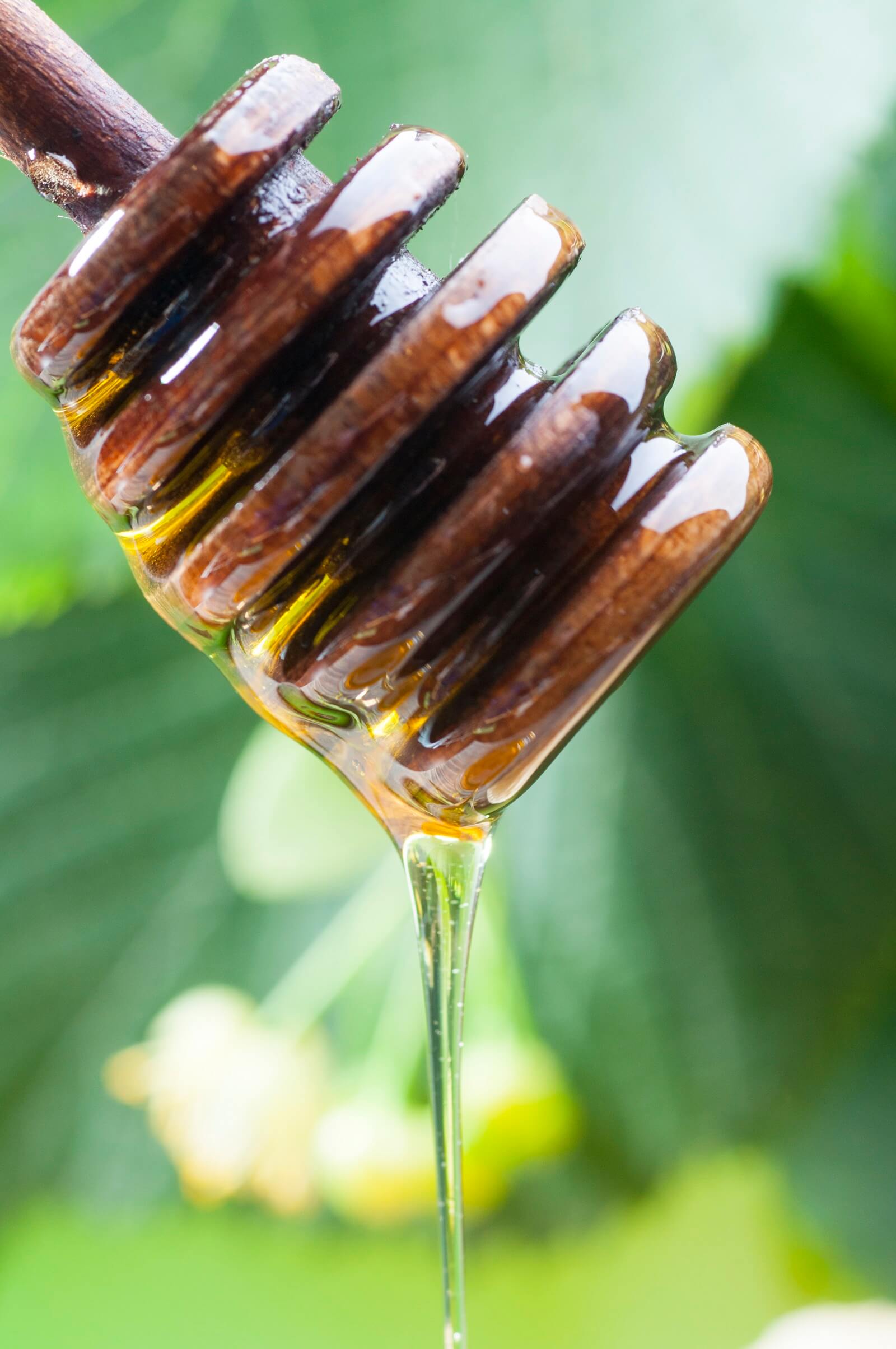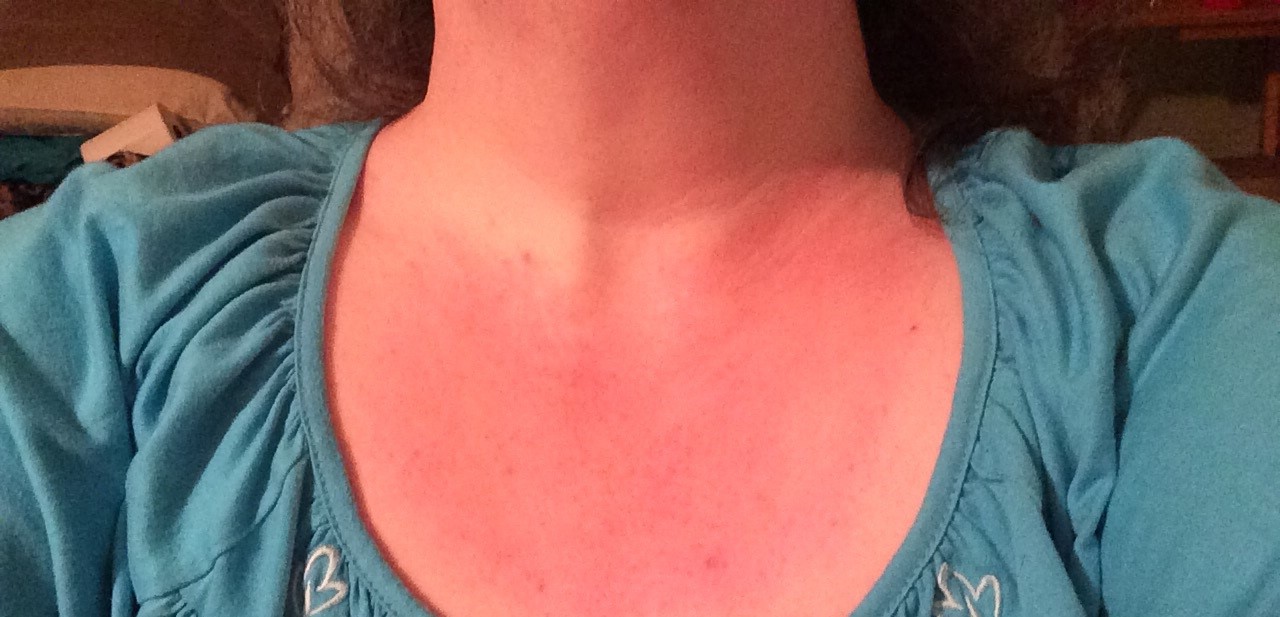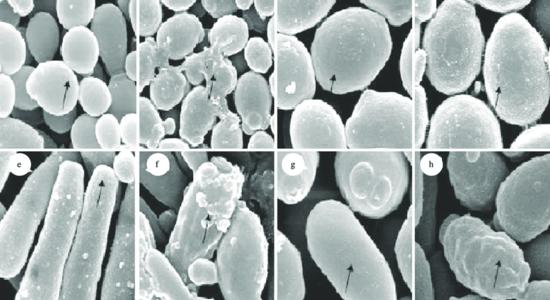See all "Honey" Section Topics

Are there any benefits to using raw honey to cure Candida? The answer is not really. In fact, even artificial honey can stop Candida; albeit not as well as natural honey. So the short version of the raw organic honey treatment is that specialty, exotic honey does not provide enough antifungal power to validate its high cost. You might not hear this too much around the internet as many people are trying to promote their expensive honey product or derivative. But, we will go into some research that proves this to be the plain truth!
If you have some time, and want to educate yourself on using honey for Candida, feel free to check out this comprehensive article: honey and yeast infection. Skim through the linked scientific journals listed on this page as well for a real in-depth analysis of this topic.
Raw Honey for Candida

There was one study that is of very much interest to the topic of raw honey vs processed honey Candida treatments. The study was published in Frontiers of Microbiology [2012; 3: 265], and analyzed the antimicrobial effects of honey before it was processed (thus it was raw) and after it was processed. The processing of the honey was primarily heating and filtering of the honey. The species of Candida used to evaluate the antifungal properties of the honeys was Candida albicans (this species causes the vast majority of yeast infections).
The study used a wide variety of honey samples that included 17 different samples of honey. The plants which the bees utilized to create the honey were primarily the following plant species:
- Spotted gum (Eucalyptus maculata) (samples S1–S5),
- Red stringybark (Eucalyptus macrorhyncha) (samples R1–R5)
- Yellow box (Eucalyptus melliodora) (samples Y1–Y5)
- One mixed sample of canola/red stringybark (R6)
- One pure sample of canola honey (Brassica napus) (C1)
The study can be summarized in one table where the minimum inhibitory concentration of each honey is stated. As this table table from the study shows, there was little difference in processed honey and raw honey’s ability to inhibit Candida albicans. In some cases Candida was stopped even better by processed honey!
If you examine the chart, you will see that hydrogen peroxide production seemed to be significantly inhibited by the processing of honey. Thus, if you want a good antibacterial honey, you should opt for one better able to produce hydrogen peroxide; and this would mean using a raw honey product. Just remember, Candida is a yeast and not a bacteria; in fact, low concentrations of hydrogen peroxide may even stimulate the growth of Candida.
Another study, cited on other parts of this website, was conducted on various honeys and artificial honey. The study was published in the journal of Medical Mycology [(2006) 44 (3): 289-291] and showed that artificial honey also cures Candida. The caveat, however, was that natural honey did work to cure Candida better than artificial honey. But, this does show you there is not much need to procure a specialty honey to treat a yeast infection.
An interesting study was also published that demonstrated how artificial honey compared to organic heather honey in terms of antifungal ability. This study was published in the Journal of Medicinal Food (14 (0) 2011, 1–5). The organic honey was monofloral heather (Erica sp.) honey; and, 80 different samples of this honey were used. The organic honey was harvested in Portugal according to European organic beekeeping rules. The artificial honey was synthesized by dissolving 1.5 g of sucrose, 7.5 g of maltose, 40.5 g of d-fructose, and 33.5 g of d-glucose in 17 milliliters of sterile, deionized water.
The study found that the organic honey stopped Candida far better than the artificial honey; as the Medical Mycology study also reported. The study concluded that the component responsible for antifungal ability is not solely based upon sugar content.
As discussed in the article about honey and yeast infection, the species of plants the bees gather nectar from determines how effective a particular honey will be at getting rid of a Candida infection. The various phytochemicals that remain in the honey are responsible for this difference. Consequently, you can simply add antifungal plant chemicals to your honey by mixing it with essential oils or powdered herbs. This could be a much easier way to make effective Candida fighting honey; compared to scouring honey retailers to find the best type of honey.
A 1/2 Day & Yeast is Gone!
Linda Allen suffered from yeast infections for years. Through researching natural medicine & Candida, she found an efficacious solution!
Linda is one expert you want on your side! Let her show you how to get rid of a superficial yeast infection in just 12 hours; AND, keep it gone!
A 60-day, 100% money back guarantee is provided.
Visit Official Site!Does Honey Feed Candida?

Eating honey for a Candida diet is probably not a good idea; as low concentrations of honey will feed Candida. When applied topically to the vagina, mouth, or other external area of the body, honey is a viable natural cure. However, when you eat honey, your stomach acid and enzymes break down the sugars and dilute the honey. Of all the studies specified here, various concentrations of honey were necessary to top Candida. When you dilute honey with other substances in your stomach, it is sure to lose its ability to control yeast overgrowth. Additionally, the yeast will feed on the sugars that honey will provide. Consequently, you are not going to be able to allay a digestive system yeast infection by eating honey. You will likely just aggravate your problem by taking in excessive amounts of sugar—as this is food for Candida.
For systemic Candida problems, focus on antifungal herbs, essential oils, and supplementing your diet with good probiotics (such as Lactobacillus acidophilus). Team that up with a low sugar diet, and you are going to give a powerful blow to Candida in the gut!
Eliminate Bacterial Vaginosis & Vaginal Odor
Jennifer O’Brien is one prominent expert on BV that knows how to get rid of vaginal odor. BV is a common infection that you don’t have to put up with.
Jennifer will show you how to naturally eliminate vaginal odor in just 3 days.
A 60-day, 100% money back guarantee is provided.
Visit Official Site!A Natural, 12 Hour Yeast Infection Cure

According to a research paper published in Clinical Microbiology Reviews [12.1 (1999): 80-96], Candida species are quite ubiquitous organisms. Candida are most frequently present in the mouth; and, live in 31% to 55% of healthy people. The species that causes approximately 70% to 80% of all Candida infections is C. albicans.
The Chinese Journal of Obstetrics and Gynecology [2011 Jul;46(7):496] reports there appears to be a correlation between intestinal Candida infections and vaginal yeast infections. And, this provides a clue, as to why yeast infections in general, can reoccur.
This study states, in 148 cases of vaginal candida infections, 33.1% of the women were infected in both the intestines and vaginal area. The recurrence rate of yeast infections, in women with simultaneous intestinal infection, was significantly higher than for women who did not have an intestinal infection. This study concluded that vaginal yeast infections are highly associated with simultaneous intestinal Candida infection.
As research appears to indicate, systemic Candida infections can and do happen. A more systemic Candida infection may primarily get a foothold in the intestines; and cause a wide array of problems. If your yeast infections keep happening, a systemic Candida problem may be why.
One woman who suffered from a systemic Candida infection, for about 12 years, was Linda Allen. The systemic Candida infection that attacked Linda caused a wide range of health problems in addition to yeast infections. Some of these problems, Linda describes in her own words in the following quote:
To be honest, it was hard to pinpoint exactly what was wrong: I wasn’t really sick, but I wasn’t really well either. I had listlessness, fatigue, brain fog, stomach ailments, unexplained rashes, skin infections, and so on. It seemed like every day brought a new challenge.
My energy was sapped and I felt exhausted, which affected my grades and put a big dent in my social life.
Linda Allen’s symptoms included an embarrassing vaginal discharge, severe itching, and burning sensations. Her infections were difficult to deal with, and Linda’s health problems cost her financially as well. Linda states these infections of Candida can become excruciating when they happen as frequently as a menstrual period.
Yet, Linda spent a great deal of time in research; and even questioned health professionals who were kind enough to share some time with her. Linda even tried an array of purported "cures." Although it took a while, eventually, Linda put together a natural treatment plan she hoped would solve her Candida situation.
After spending about a year refining her new approach, Linda tried her system on herself. It worked amazingly well. Linda even returned to a few medical doctors to get tested for the presence of infections. These tests revealed all indicators of infection had vanished! Linda was indeed well again, after such a long, difficult journey.
Linda has since published a book detailing how to copy her success. She also includes a 12 hour yeast infection cure that can get rid of a superficial (such as a genital yeast infection or oral thrush) yeast infection in about 12 hours.
Linda’s publisher protects those who get her book with a 60 day, 100% money back guarantee. Linda’s publisher, a subsidiary of the United States based firm Keynetics Incorporated, is a reputable digital retailer that has been around for a long time. They have great customer service, and make getting a full refund on Linda’s book quick and easy. If you’re not satisfied, you can quickly get all your money back.
If you would like to learn more about Linda’s journey to freedom from Candida, see reviews of others who tried her natural system, or find out more about her efficacious book; you can find more information at Linda Allen’s website.
Author: Mr. Nicholas Gross

Nick Gross is a natural medicine enthusiast who has been researching and writing about natural medicine since 2008. Nick is primarily a web developer but also researches and authors written and video content about natural health. Nick has a bachelor’s degree in Management Information Systems from the University of Northern Iowa.
Disclaimer
The information on this website is not a prescription for anyone. This information is for informational or educational purposes only, and is not a substitute for professional medical advice or consultations with healthcare professionals.
Affiliate Disclosure
Some of the links provided on this website are affiliate links. When a purchase is made through these links, Candida Hub earns money from commission. This helps to keep the website up and helpful to people for free. Thank you for any support!
Stay Up to Date
If you enjoyed this article, consider following / liking our Facebook page. This page is primarily utilized to alert followers of new articles that are put on Candida Hub. Candida related news is also discussed. While you are there, you can see what has been more recently added to Candida Hub.
Clair Goodall: Author & Nature Lover
Clair Goodall is a bee-obsessed natural medicine convert from Minnesota. She is one expert you might want to know more about!
Clair will help you protect you and your family from toxic products and chemicals and help you discover solutions from nature.
Also, Clair’s book is backed by a 60-day, 100% money back guarantee
Visit Official Site!SOURCES:
- http://dx.doi.org/10.3389/fmicb.2012.00265 — The effect of standard heat and filtration processing procedures on antimicrobial activity and hydrogen peroxide levels in honey. Frontiers of Microbiology (2012; 3: 265)
- https://dx.doi.org/10.1080/13693780500417037 — Honey has an antifungal effect against Candida species. Medical Mycology, 2006, Vol. 44, No. 3 : Pages 289-291 ( link to full text: http://mmy.oxfordjournals.org/content/44/3/289.full )
- http://dx.doi.org/10.1089/jmf.2010.0211 — A Survey of the In Vitro Antifungal Activity of Heather (Erica Sp.) Organic Honey. Journal of Medicinal Food (14 (0) 2011, 1–5)
- https://doi.org/10.1128/CMR.12.1.80 -- Fidel, Paul L., Jose A. Vazquez, and Jack D. Sobel. "Candida glabrata: review of epidemiology, pathogenesis, and clinical disease with comparison to C. albicans." Clinical Microbiology Reviews [12.1 (1999): 80-96].
- https://pubmed.ncbi.nlm.nih.gov/22041440/ -- Lin XL, Li Z, Zuo XL. "Study on the relationship between vaginal and intestinal candida in patients with vulvovaginal candidiasis." Chinese Journal of Obstetrics and Gynecology (Zhonghua fu chan ke za zhi). [2011 Jul;46(7):496].







